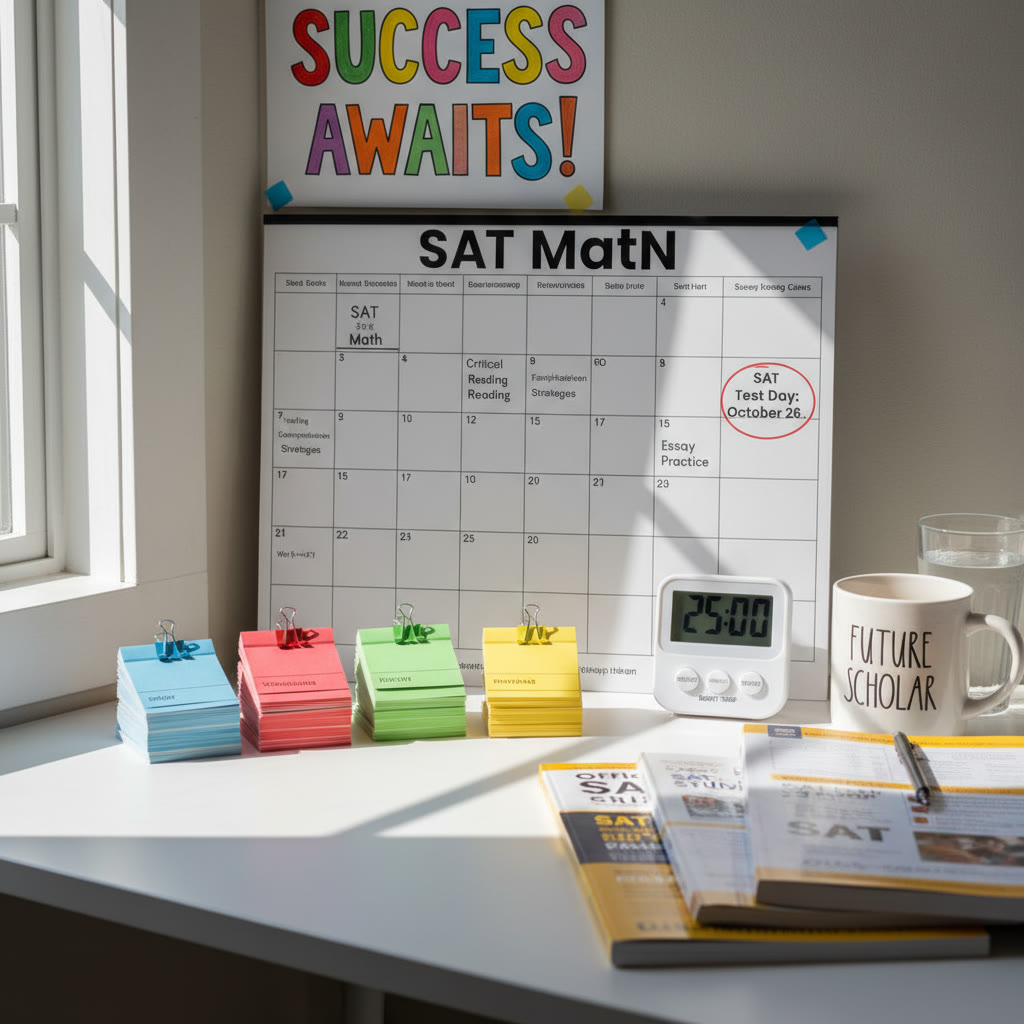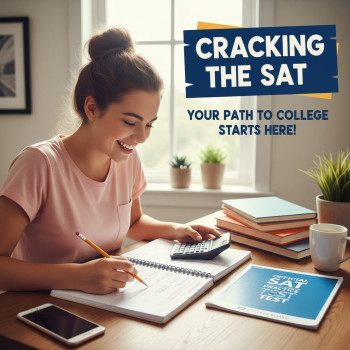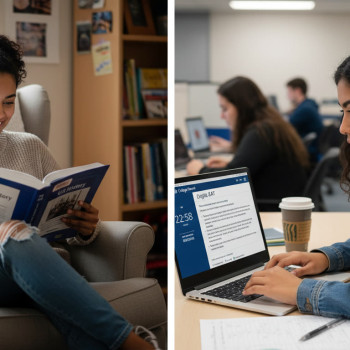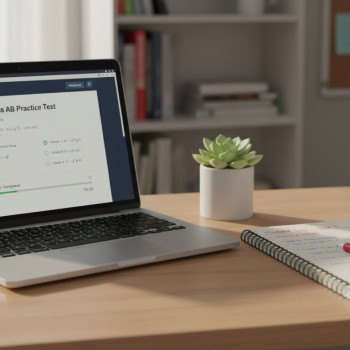Why adapting your study style matters more than just studying harder
Studying for the SAT isn’t a tunnel-vision sprint where every student benefits from the same set of flashcards and a pile of practice tests. The exam tests a mix of reasoning, reading, and timing — and the most successful students are the ones who study smarter, not just longer. Adapting your study style means shaping your prep around how you learn best, which weaknesses you actually have, and how you perform under timed conditions. That combination creates efficiency: more score gains per hour of study.
Think of your study routine like a tailored jacket. Off-the-rack might fit okay, but tailoring — subtle nips and tucks — makes it fit and feel like yours. When we tailor SAT prep to your learning preferences, you reduce wasted effort, target real gaps, and build confidence. In practice, that could look like swapping passive review for active recall, trading generic math drills for focused concept blocks, or integrating short, intense reading sessions for students who fatigue quickly.
Start with a clear baseline: diagnostics and honest reflection
Before you adapt anything, know where you are. Take a full, timed diagnostic SAT to get a score snapshot and to reveal patterns: Are you losing points on data interpretation in the Math section? Do you skip long Reading passages? Are grammar rules in Writing & Language slippery? Look beyond the raw score — note which question types and timing problems recur.
Complement that diagnostic with a short self-reflection about how you learn. Ask yourself:
- Do I remember things best after writing them down, listening, or doing practice problems?
- Do I focus better in short bursts or longer study blocks?
- Do I get anxious under timed pressure, or do I struggle with the unfamiliar language of questions?
Combine the objective data from the test with subjective insight about your habits. That dual picture guides which study adaptations will yield the biggest returns.
Identify your learning profile
Visual learners
Visual learners absorb material better when they can see patterns, diagrams, and highlighted structures. For the SAT, that means translating word problems into sketches, mapping passage structures, and creating color-coded grammar charts. Use tables for data, boxes for variables, and flow arrows to show relationships in Reading passages.
Auditory learners
If you remember content by hearing it, read passages out loud, explain math steps verbally, or use voice memos to record tricky grammar rules. Listening to your own explanations forces clarity: if you can’t verbalize why an answer is correct, you don’t understand it as well as you think.
Kinesthetic learners
Kinesthetic learners thrive on movement and doing. They benefit from physical methods: acting out problem setups with real objects, using index cards for grammar rules you can shuffle and sort, or standing up and pacing during timed reading practice. Short, active study sessions work better than marathon desk time.
Analytical vs. holistic learners
Analytical learners enjoy breaking questions into discrete parts — ideal for step-by-step algebraic problems. Holistic learners see the big picture and can be excellent at synthesizing themes in Reading. Both approaches can be adapted: analytical students should practice integrating passages into broader themes, while holistic students can gain precision by practicing detailed error identification in grammar and algebra.
Adapt study techniques to each SAT section
Reading: build inference and stamina your way
For Reading, adaptation centers on how you approach passages. If you’re a fast skimmer who misses detail, try a slow, paragraph-by-paragraph note method for a week: jot one sentence about each paragraph’s main idea. If you get bogged down in details, practice a top-down approach: read the first and last sentences, then the topic sentences of each paragraph to form a scaffold before answering questions.
Active techniques that suit varied learners:
- Visual: annotate passages with color-coded boxes for main ideas, tone, and evidence.
- Auditory: read paragraphs aloud or record yourself summarizing them in 30 seconds.
- Kinesthetic: use index cards — write a paragraph’s main idea on a card and physically order them to reconstruct argument flow.
Writing & Language: systemize grammar and style
Grammar often feels like memorizing arbitrary rules. One adaptation is to categorize errors by type (verb tense, pronoun clarity, punctuation) and focus on one category per study block. Create small checklists you can run through for each sentence under review. For students who learn visually, develop a cheat-sheet with sentence structures; auditory learners should explain grammar rules to a peer or tutor; kinesthetic learners can practice by physically rearranging sentence parts on paper.
Math: conceptual understanding versus rote practice
Math success on the SAT is both conceptually driven and speed-dependent. If you’re a concept learner, focus on deep understanding: derive formulas from principles and solve problems two ways (algebraically and graphically). If you’re a drill learner, prioritize targeted practice sets to build fluency.
Time adaptation is crucial: practice sets of 3–6 problems under short time windows to train pacing for the problem types that take you longest. For example, if geometry questions slow you down, do five geometry questions in 15 minutes daily for two weeks and track progress.
Designing a personalized study plan
A study plan becomes powerful when it’s realistic and responsive. Start by allocating study time based on weaknesses revealed by diagnostics, not preferences alone. Then adapt the format and schedule to your learning profile and life commitments.
Core principles:
- Prioritize the highest-leverage weaknesses first (those that cost you the most points).
- Mix skill-building (concepts and rules) with repeated, focused practice on question types.
- Include regular, full-length practice tests under realistic timing to track progress.
- Build recovery days and micro-rests to avoid burnout.
Sample weekly templates
Below are two sample templates that adapt to common learner rhythms. Customize the blocks based on your diagnostic data and preferred learning style.
| Day | Focus (Analytical/Concept) | Activity | Duration |
|---|---|---|---|
| Monday | Reading focus | Timed passage practice + targeted annotation drills | 60–90 min |
| Tuesday | Math foundations | Concept review (e.g., linear functions) + 15 practice problems | 60–90 min |
| Wednesday | Writing & Language | Rule drills + error identification sets | 45–75 min |
| Thursday | Mixed practice | Short sets across sections + review mistakes | 60 min |
| Friday | Timed practice test section | Full Math or Reading section + detailed review | 90–120 min |
| Saturday | Full practice test | Take a full-length test under timed conditions | 4 hours |
| Sunday | Rest & light review | Reflect, review flashcards, mindfulness, physical activity | 30–60 min |
Adjust duration and focus blocks to suit how you concentrate. Some students do better with two 45-minute blocks rather than one long 90-minute session. Keep experimenting until the plan fits like that tailored jacket.
Active techniques that stick — and why they work
Active learning beats passive reading because it forces retrieval and checks understanding. Some techniques you should try and adapt to your style:
- Spaced repetition: revisit grammar rules and formulae on a spaced schedule to transfer knowledge from short-term to long-term memory.
- Interleaving: mix question types in a single study session to improve adaptability under test conditions.
- Self-explanation: after solving a problem, explain why each incorrect choice fails. This builds discriminative judgment.
- Error journals: keep a running log of mistakes with contexts — type of mistake, why it happened, and how to avoid it. Review weekly.
These techniques are flexible. Visual learners can make colorful error journals. Auditory learners should record verbal explanations. Kinesthetic learners can sort index cards that represent different error types.
Practice tests: not just a score — a coaching tool
Full-length practice tests are the single most informative study tool when used correctly. Instead of just taking the test and moving on, treat each test as a coaching session:
- Analyze time usage: which sections or question types eat up minutes?
- Classify errors: conceptual gap, careless mistake, or timing skip?
- Create targeted follow-ups: four targeted drills to attack the most frequent error type from the test.
Run periodic timed tests to calibrate pacing and simulate test-day conditions. Use the results to iterate on your study plan: if certain question types consistently cause trouble, increase targeted practice for those types by 20–30% that week.
Leverage support wisely: tutors, peers, and tech
Adapting your study style also means adapting the support you choose. Tutors are not one-size-fits-all; the best tutors diagnose how you learn and introduce strategies that resonate with your profile. That’s where Sparkl’s personalized tutoring can be especially helpful — their 1-on-1 guidance, tailored study plans, expert tutors, and AI-driven insights are designed to identify weak spots quickly and adjust the plan as you improve. For many students, this kind of individualized feedback shortens the path from practice to performance.
Peers can be valuable for discussion and accountability: study groups are especially effective for auditory and social learners. Use technology for timed practice, error tracking, and spaced repetition, but avoid over-reliance on passive video watching; active engagement is what builds mastery.
Practical examples: how to adapt in three common student profiles
Profile A — The Busy, High-Achieving Student
Situation: Limited hours, strong baseline, needs a 100-point boost. Adaptation: Focus on high-yield weaknesses and time-saving strategies. Use weekly 90-minute sessions dedicated to the hardest question types and biweekly full-length tests. Consider a tutor for targeted sessions focused on pacing and advanced question strategies. Use concise error logs and 10-minute daily micro-practice for formula review.
Profile B — The Struggling but Motivated Student
Situation: Lower baseline, inconsistent study habits, high motivation. Adaptation: Build routines and momentum. Start with conceptual foundations in Math and grammar basics, broken into daily 30–60 minute blocks. Use frequent, low-stakes practice to build confidence. A personalized tutor or program that introduces bite-sized lessons and provides 1-on-1 feedback (for example, Sparkl’s structured approach) can accelerate progress and maintain accountability.
Profile C — The Test-Anxious Perfectionist
Situation: Strong knowledge but underperforms under timed pressure. Adaptation: Simulate pressure in training: shorter timed sets, countdowns, and gradual exposure to full-length tests. Pair practice with mindfulness and breathing techniques to manage anxiety. Work with a coach who can provide real-time pacing feedback and debriefs to reframe mistakes as learning opportunities rather than failures.
Test-day adaptations: small rituals that make a big difference
On test day, your study style adaptations shift from learning to performance. Choose rituals that align with what calms and energizes you:
- If you’re a morning person, prioritize a quick review of formula sheets and light, confidence-building practice (one short passage or five math problems).
- If you’re anxious, use a short breathing routine and arrive early to acclimate. Avoid cramming, which usually undermines confidence.
- If you lean on active recall, do a five-minute self-quiz in the car or on the walk to the center — nothing longer than 10 minutes.
Bring practical tools: a watch, approved calculator, snacks for after the test, and a simple checklist of pacing goals. Remember that the goal is steady execution, not perfection.
Measuring progress and iterating
Set measurable checkpoints: weekly practice test trends, pacing improvements (minutes saved on certain question types), and the frequency of specific error types. Use those metrics to reallocate study time. If a concept has plateaued despite practice, switch strategies: try a different tutor, change practice formats, or shift to more active techniques.
Sparkl’s AI-driven insights and tailored plans can help interpret those metrics quickly, showing where to double down and where to ease off. The primary habit to form is continual iteration: small, consistent changes informed by data and reflection.
Maintaining balance: energy, sleep, and motivation
Adapting your study style isn’t only about study tools — it’s about sustainable energy. Sleep consolidates memory; even one night of poor sleep can shrink gains. Nutrition and movement affect focus: short walks or light exercise before study sessions improve concentration. Finally, motivation thrives on variety and visible progress. Celebrate small wins: a faster pacing metric, a cleaner grammar score, or a math concept mastered.
Final checklist: adapt, practice, review, repeat
Before you close this article, take this short checklist and customize it to your study profile:
- Have you taken a full diagnostic test and reviewed patterns of error?
- Did you identify your learning profile and choose matching techniques?
- Is your weekly plan realistic and focused on high-leverage weaknesses?
- Do you use active techniques (spaced repetition, self-explanation, error journals)?
- Are you taking full-length practice tests and using them as coaching tools?
- Do you have a support system — tutor, peer, or tech — that adapts with you?
Adapting your study style for the SAT is a process, not a single decision. It’s about tailoring your plan to your strengths and weaknesses, trying techniques that fit how you think and feel, and iterating based on honest feedback. If you combine that reflective approach with consistent practice, you’ll find that every hour you invest yields more improvement than before.
Image suggestions


Parting thought
Everyone’s path to a higher SAT score looks different. The smartest strategy is the one that matches who you are: how you learn, how you think, and how you respond under pressure. Make tiny experiments, keep what works, and replace what doesn’t. And if you want structured, adaptive support that molds to your needs — from 1-on-1 guidance and tailored study plans to expert tutors who can help you shift strategies — consider using a personalized program like Sparkl to make those adjustments faster and more reliable. With the right adaptations, your study time becomes a powerful engine for growth — and your best score is within reach.

















No Comments
Leave a comment Cancel